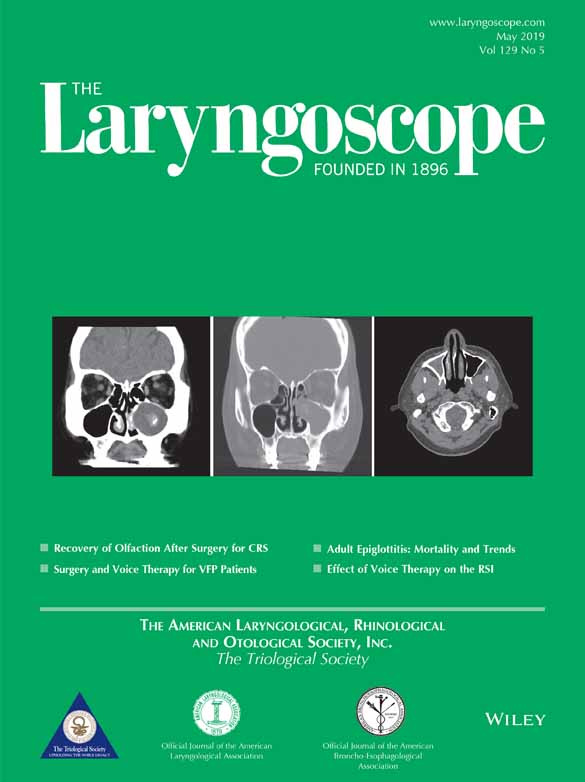Contrast-Enhanced Ultrasound With Perflubutane for Sentinel Lymph Node Mapping in Cutaneous Melanoma: A Pilot Study
Presented as a poster presentation at the Academy of Otolaryngology–Head and Neck Surgery Annual Meeting, Chicago, Illinois, U.S.A., September 11, 2017.
This study was sponsored by a grant awarded by the Wright Foundation to Dr. Kevin G. King, MD. The perflubutane contrast agent (sonazoid) was provided free of charge by General Electric Healthcare. The authors have no other funding, financial relationships, or conflicts of interest to disclose.
Abstract
Objective
To study the feasibility of contrast-enhanced ultrasound (CEUS) for identification of SLN associated with cutaneous melanoma.
Study Design
Single arm pilot study in a swine animal model.
Methods
One milliliter of perflubutane (Sonazoid, GE Healthcare, Milwaukee, WI) was injected into the peritumoral dermis in five swine with cutaneous melanoma. Ultrasonography was used to follow enhancing lymphatic channels to lymph nodes (LN). Intradermal injection of vital blue (VB) dye was used as a positive control. LN identified by either method were excised and examined histologically.
Results
There were five primary cutaneous melanomas with mean area of 4.36 ± 4.75 cm2 and Breslow depth of 3.6 ± 1.5 mm. Six possible sentinel lymph node (SLN)s were identified with CEUS, and nine were identified with VB. SLN averaged 12.44 ± 6.15 cm from the primary tumor. Four of six (67%) SLNs identified by CEUS and four of nine (44%) candidate SLNs identified by VB contained histologically confirmed metastatic melanoma. All six CEUS-identified SLNs were also identified with VB. Two LNs not containing melanoma were identified by CEUS; three were identified with VB. In all SLN with metastases, metastatic cells were scattered throughout the LN and not clustered in a discrete mass.
Conclusion
CEUS with perflubutane feasibly identifies SLN associated with cutaneous melanoma and may be a useful adjunct technology in facilitating precise SLN dissection. Our work supports a clinical trial investigating the use of CEUS for this application.
Level of Evidence
NA Laryngoscope, 129:1117–1122, 2019




